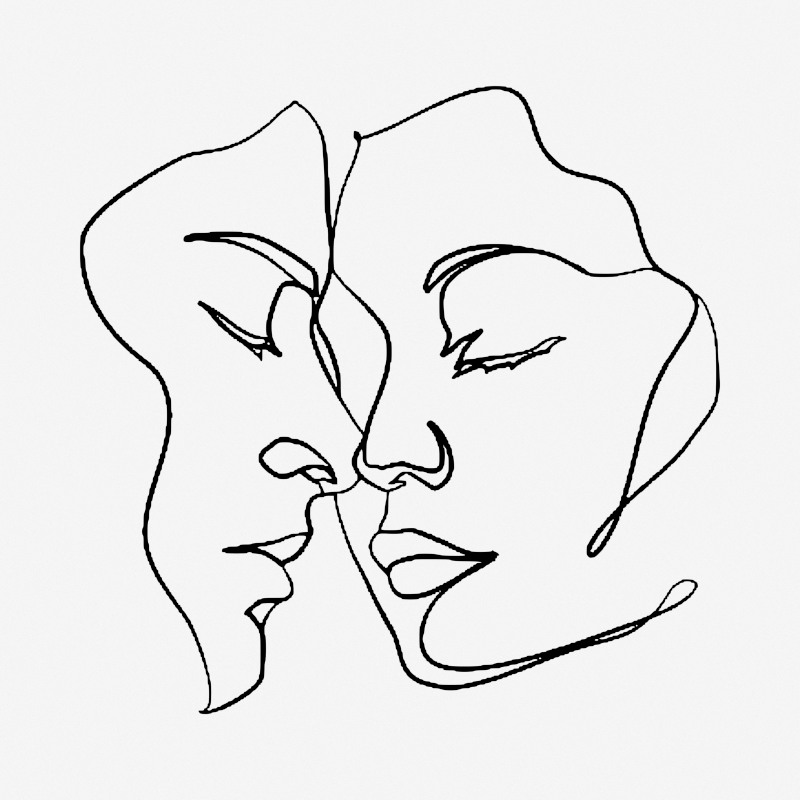This article offers a wide selection of line drawings from which you can develop your own sketching skills, as well as learn from some famous artists from the realms of art history.
Introduction to Line Drawings
The earliest art techniques introduced in most courses related to line drawing, where we start to build up form bit-by-bit. This can be achieved by dissecting any object into its component parts, and then slowly drawing each item before the overall piece is complete. The next phases of development for artists would then be to start to add more detail, and moving beyond lines to other drawing techniques.
In the modern world, simple line drawings can often be seen as highly charming, and suit minimalist homes. One can almost imagine being an artist ourselves, as the genius of these designs make them appear to be possible for anyone. In reality, there is much that lies behind these simple creations, including experience and skills of observation.
List of Line Drawings and Paintings
Find below a selection of different line artworks, covering simple sketches and illustrations, all the way through to more complex paintings in which lines are key to their design. We have mainly drawn on art from the past two centuries, and there should be plenty of inspiration to help you create simple line art of your own. To see how artists have achieved so much with just a few lines of pencil or ink is enough to encourage any budding artist.
Line artists have proven popular in recent years, with posters of their work appearing in homes all across the world. Much of their work is so accessible, that anyone can enjoy it regardless of their background, with little explanation required in most cases. We hope you enjoy this collection of art, and make use of it for your own artistic development and inspiration.
Couple Portrait Line Drawing
This delightful illustration features a couple in a portrait which is carefully crafted using just a few lines. Single, continuous lines track the facial features of each female, covering lips, eyes, nose, chin and the outline of their hair, in what must have been a highly practiced action. This illustration is flexible, and could be traced by those looking to practice their own portrait drawing talents, and even coloured in. This piece is a great introduction to line art, and shows that is possible with just a few lines.
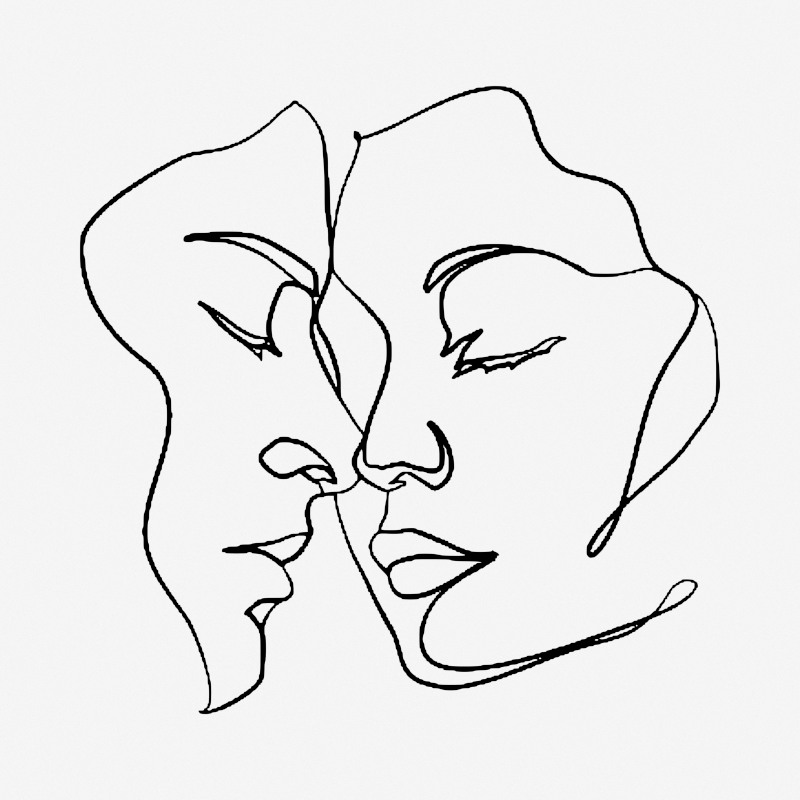 Couple Portrait Line Drawing (courtesy of rawpixel)
Couple Portrait Line Drawing (courtesy of rawpixel)
Female Portrait Line Art
Another beautiful line drawing, much is achieved through negative space and also the way in which our minds can fill in the blanks of what has not been added by the artist. Most work is devoted to the arms on which the female leans her weight, with her chin balanced on her right hand, which cups the side of her face. No eyes or hair is included in this illustration, only her lips which are prominent and full bodied.
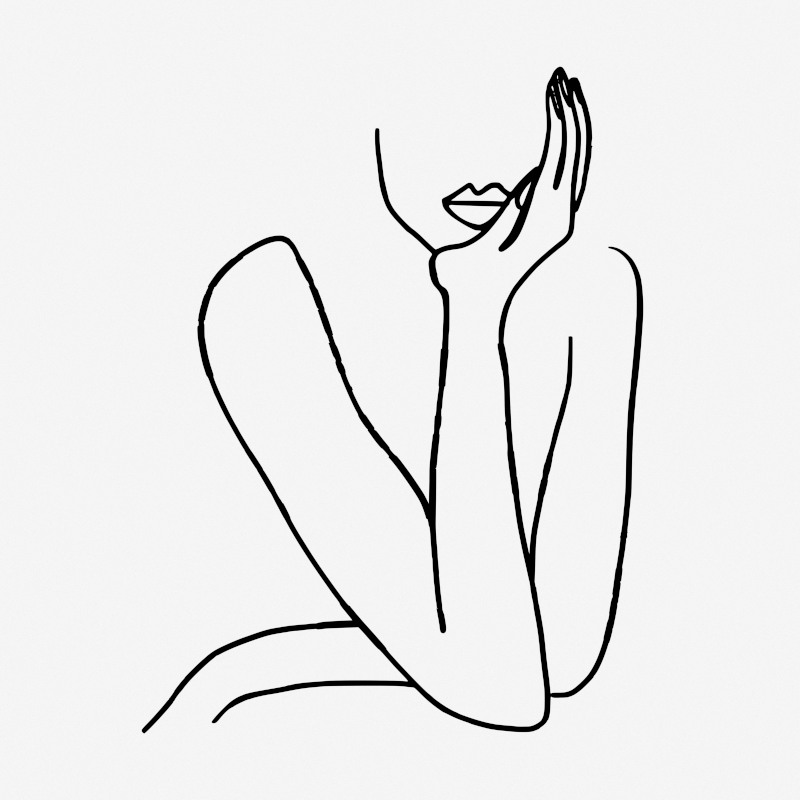 Female Portrait Line Art (courtesy of rawpixel)
Female Portrait Line Art (courtesy of rawpixel)
Ballerina Dancing Line Drawing with Pink Dress
This delightful piece features slim lines traced around the figure of this elegant woman who balances gracefully on her toes. Her left arm is held vertically, whilst the other cuts across her body. Her eyes point upwards, with her back straight. Her dress is filled in tones of pink, whilst the rest of the artwork is left just with the original black outlines.
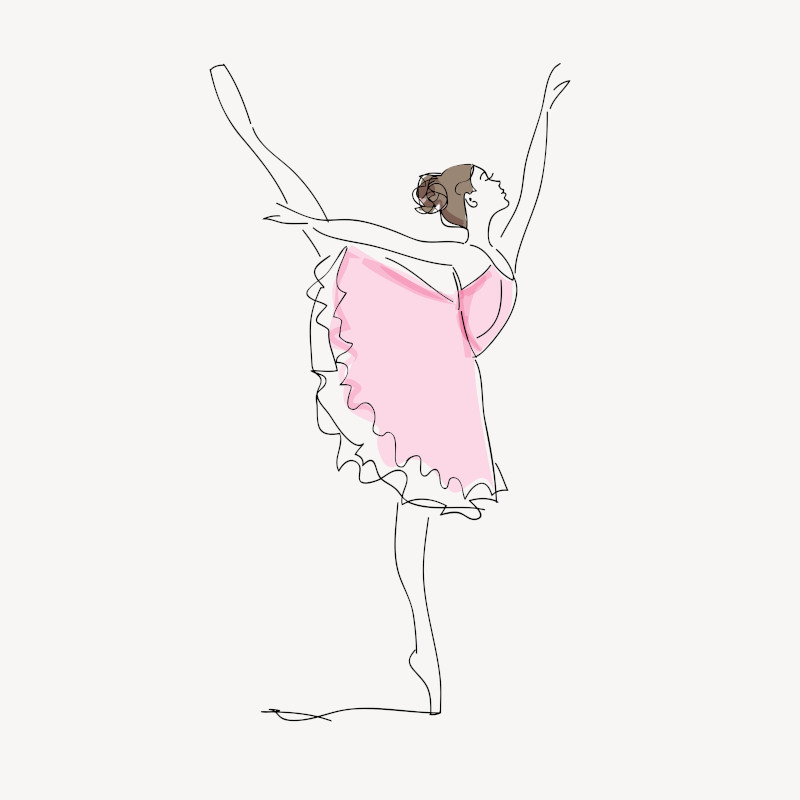 Ballerina Dancing Line Drawing with Pink Dress (courtesy of rawpixel)
Ballerina Dancing Line Drawing with Pink Dress (courtesy of rawpixel)
Succulent Plant Line Sketch
This delightfully minimalist line drawing depicts a succulent plant in a pot. One could easily use this as a basis to other plants, simply tracing the outline of the pot and then using your own flower or plant as required. Depictions of nature can have a truly calming feeling, and remain popular choices for those looking to add some art to the wall of their home. An additional option for creativity, might be to fill in one section with color, and leave the rest blank, helping to draw attention to a specific part of the design.
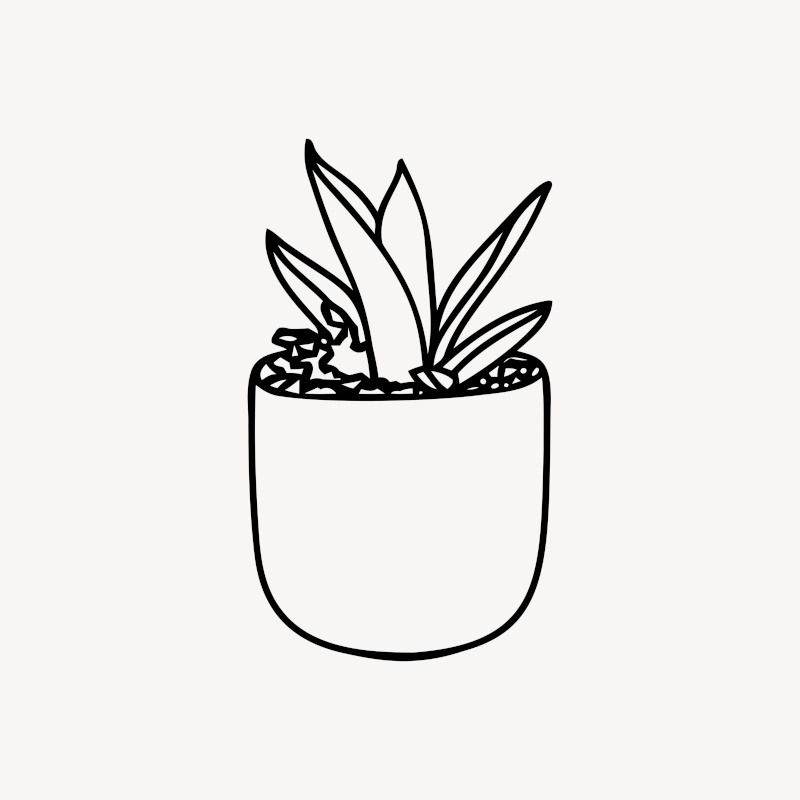 Succulent Plant Line Sketch (courtesy of rawpixel)
Succulent Plant Line Sketch (courtesy of rawpixel)
Bicycle Line Illustration
Cycling is particularly popular at the moment, both for its exercise benefits, but also in how it can be environmentally friendly compared to other forms of transport. This illustration is from an interesting perspective, the back side of the bike, making the rear tyre particularly large. One might enjoy coloring in the blank sections of this drawing, with is a relaxing hobby and also fun for children as they learn to sketch for the first time.
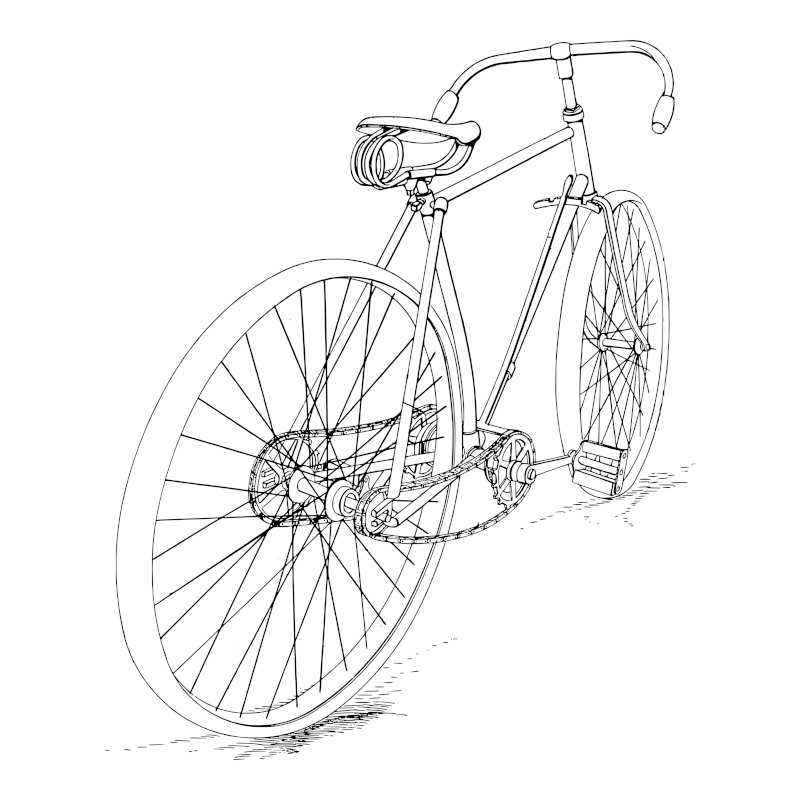 Bicycle Line Illustration (courtesy of rawpixel)
Bicycle Line Illustration (courtesy of rawpixel)
Butterfly Line Art
Enjoy the beauty of this butterfly in a carefully crafted illustration which allows us to understand every detail of this beautiful creature. By examining lines one-by-one, we can start to understand how the artist originally constructed this piece, and then perhaps work on our own versions from that. It is likely that they would have drawn out the original shapes first, before slowly working in more detail over time. Again, this line drawing could be used for coloring purposes.
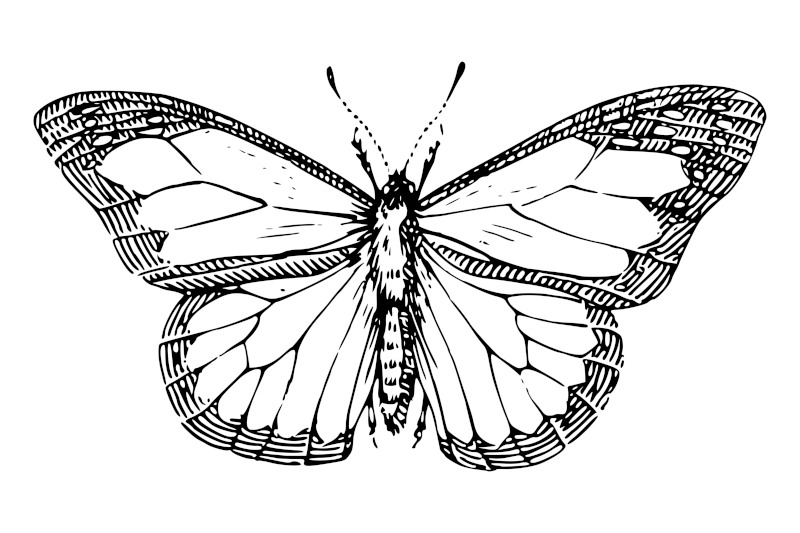 Butterfly Line Art (courtesy of rawpixel)
Butterfly Line Art (courtesy of rawpixel)
Airplane Vintage Line Drawing
This charming vintage drawing depicts an airplane in a cartoon-like depiction, with lines carefully used to add texture across the wings and tail, whilst the central part remains clear. Children love to play with airplanes, or to draw them, and many would love this illustration and potentially make copies of it themselves as a means to having fun and also improving their artistic techniques.
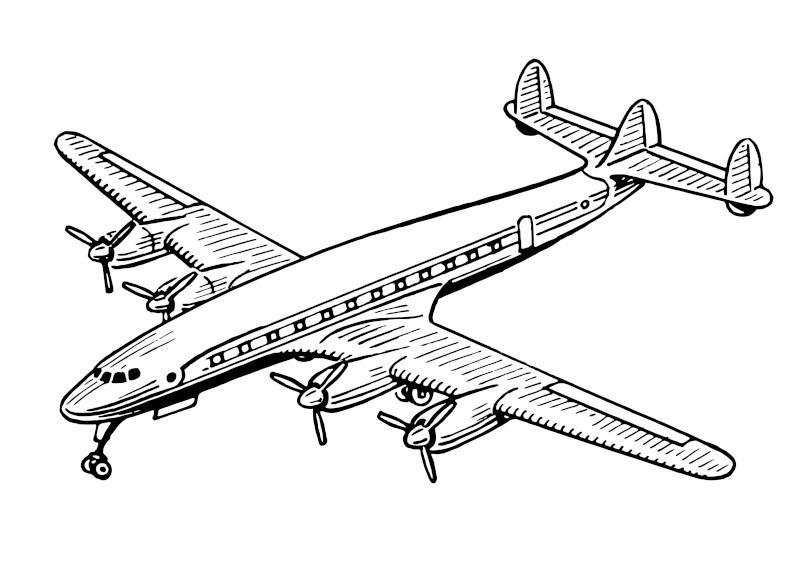 Airplane Vintage Line Drawing (courtesy of rawpixel)
Airplane Vintage Line Drawing (courtesy of rawpixel)
Toad Illustration
This toad illustration offers more detail than most drawings in this article. The artist would have observed this creature for quite some time in order to achieve this level of accuracy. It is within the realms of scientific study, where those looking to understand toad anatomy might use this drawing as a tool for observation. Colors may well have been added at a later date in order to tell us as much about the creature as possible.
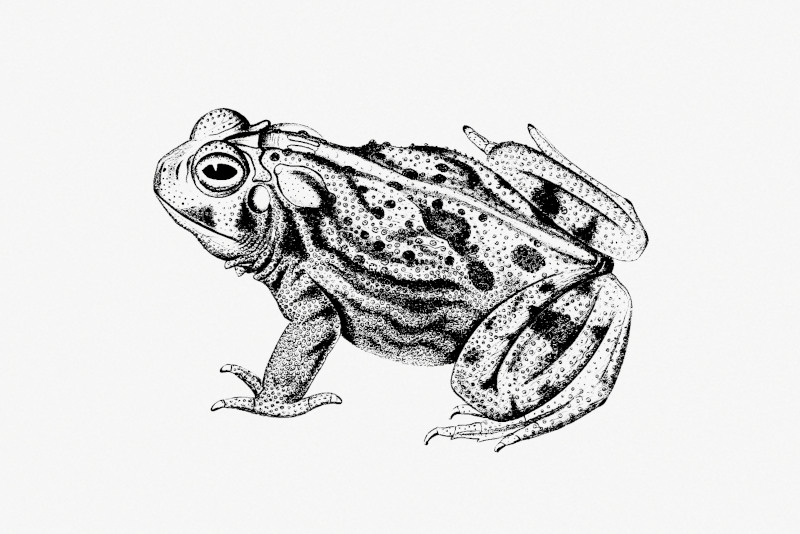 Toad Illustration (courtesy of rawpixel)
Toad Illustration (courtesy of rawpixel)
Horses Japanese Animal Ink Illustration
Japanese artists were highly skillful with their use of line, and in this case make use of ink to produce this drawing of two horses. The detail to the hair is particularly memorable and it is interesting to see how the artist captures the different behavior and angles of each horse, as if observing them in nature. This design could be repeated in woodblock printing, which was a successful art form found in Japanese art across the 18th and 19th centuries. It was also imported into Europe, inspiring a number of western artists as a result.
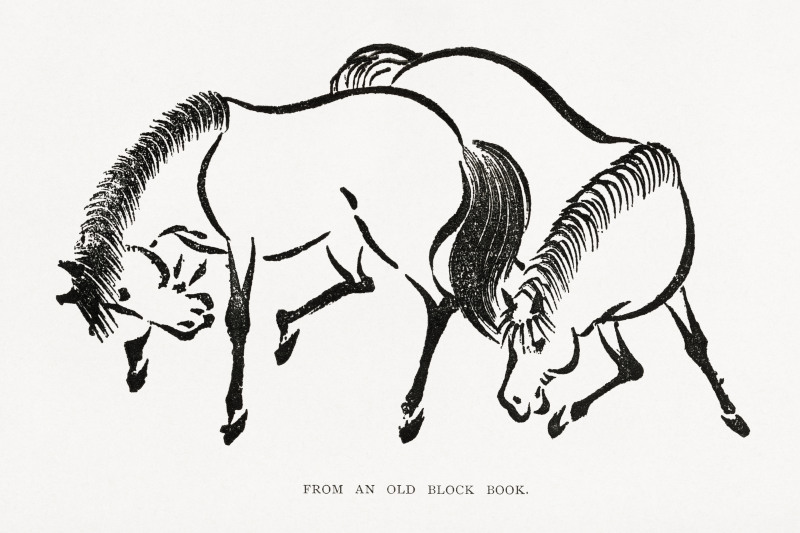 Horses Japanese Animal Ink Illustration (courtesy of rawpixel)
Horses Japanese Animal Ink Illustration (courtesy of rawpixel)
Flower River Illustration
A delightful, minimal artwork which displays an ingenious mind. Here, a Japanese line artist constructs a flower head alongside a river, symbolising a sky scene in an abstract manner. Again, another Japanese artist shows what is possible with just a few lines, plus an incredible imagination and pre-planning for this piece. It would have been a single entry as part of a wider series, which has recently been discovered and celebrated, allowing us to learn once again from their considerable talents.
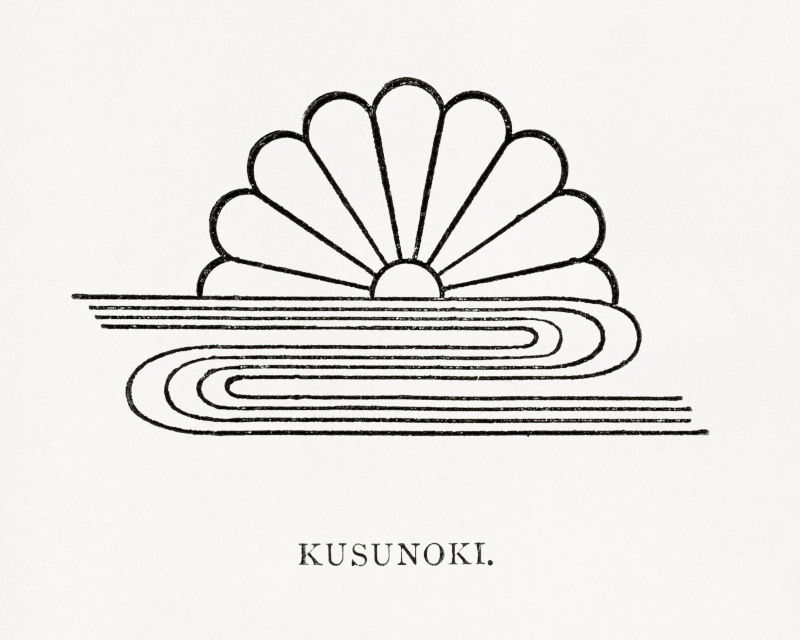 Flower River Illustration (courtesy of rawpixel)
Flower River Illustration (courtesy of rawpixel)
Skull Line Drawing
This impressive piece was constructed using a fine display of line art, with just a few areas of black used to represent the contours and gaps in this skull. It is a highly contemporary version, with skull paintings have been relatively popular in a vaiety of art movements over the centuries, with notable contributions from the likes of Vincent van Gogh as well as a number of Dutch artists from earlier centuries, who took advantage of its symbolic values.
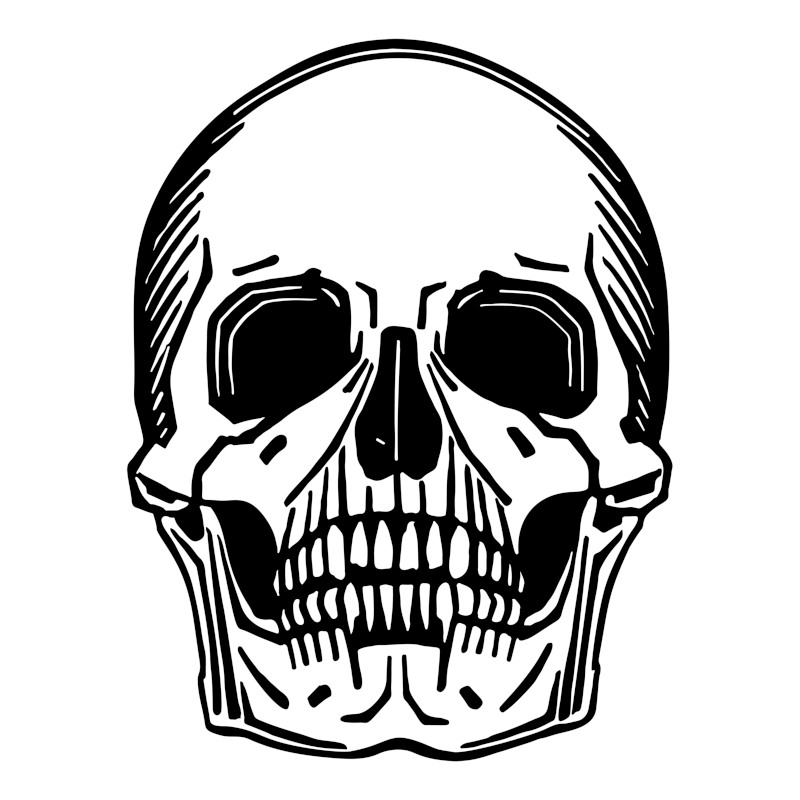 Skull Line Drawing (courtesy of rawpixel)
Skull Line Drawing (courtesy of rawpixel)
Capitoline Hill Highly Detailed Line Drawing by Michelangelo
This drawing verges into architectural design, and Michelangelo displays here his extraordinary varied talents. He was able to sculpt, paint and sketch to a level few have ever achieved and sat alongside Leonardo da Vinci has a key member of the Renaissance era. Michelangelo received major commissions in which he might design architecture, and then work on artworks to fill and decorate it, using a team of assistants to help him keep up with some challenging project requirements.
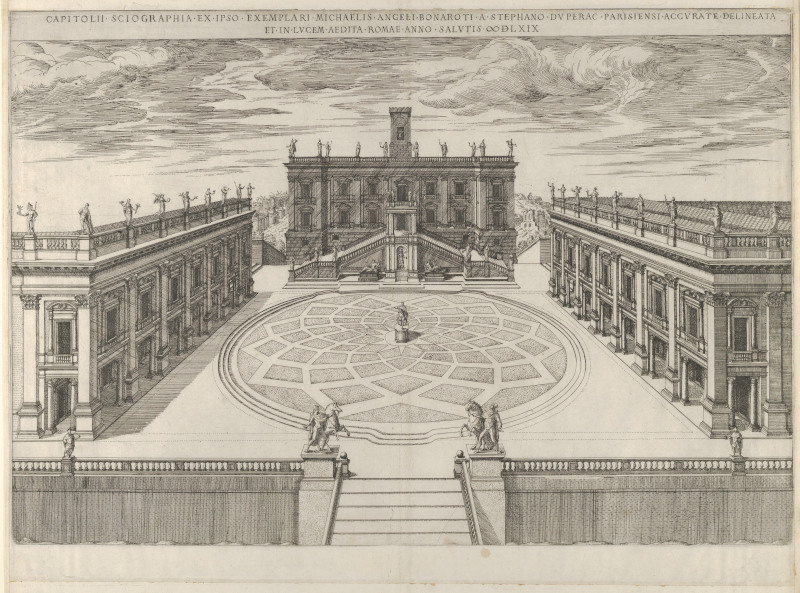 Capitoline Hill Highly Detailed Line Drawing by Michelangelo
Capitoline Hill Highly Detailed Line Drawing by Michelangelo
Woodcut Design by Albrecht Durer
Albrecht Durer was a highly regarded member of the Northern Renaissance who impressed in a variety of artistic mediums, all of which relied on his ability as a draughtsman. This helped his woodcuts and engravings, and he also studied botanical drawings from a young age, borrowing books from his father to make watercolor copies. He was a true master, and someone whose reputation has been strengthened over time, as more become aware of his achievements.
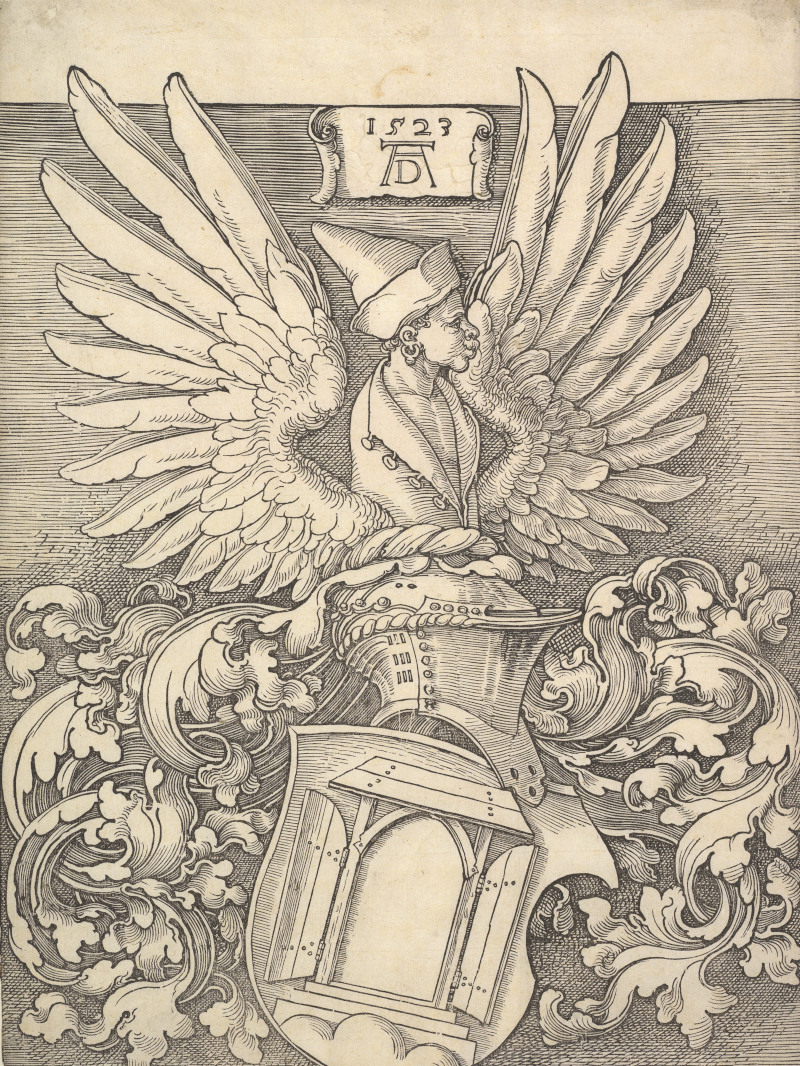 Woodcut Design by Albrecht Durer
Woodcut Design by Albrecht Durer
Bird Line Drawing by Pablo Picasso
Picasso was a master of line drawing, and loved to sketch various animals, insects and other items with just a few lines. These have proven popular, particularly with younger audiences who find these works charming and highly accessible. He was skilled in so many different art styles, including painting and sculpture, but at his core was a highly talented draughtsman. We could not leave out Picasso when considering famous line artists, and his work is instantly recognisable.
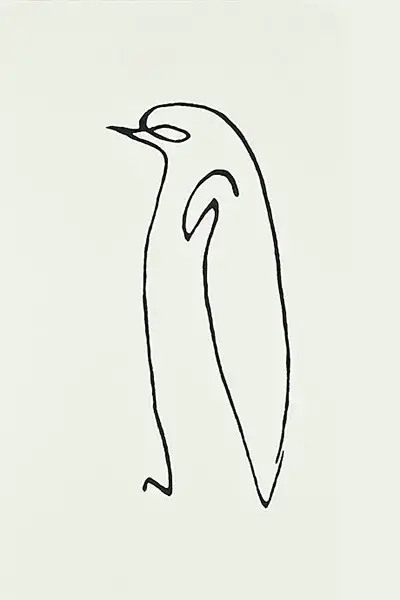 Bird Line Drawing by Pablo Picasso
Bird Line Drawing by Pablo Picasso
Expressionist Line Art by Egon Schiele
Schiele was an Austrian painter who relied on his use of line to lay out the key forms of his work. Portraiture was a major part of his oeuvre, and he loved to produce expressive, intertwined figurative work with inventive poses. Despite having a relatively short career, Schiele achieved great success in his work and was related to a number of art movements including Expressionist art, as well as Art Nouveau to a lesser degree, which was prevalent in Austria at the time. Some similarities can be drawn with Klimt's figurative art, such as The Kiss.
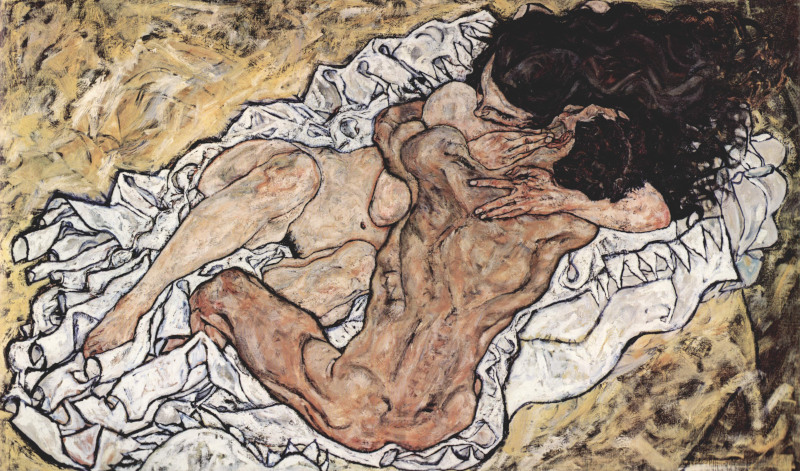 Expressionist Line Art by Egon Schiele
Expressionist Line Art by Egon Schiele
Jackson Pollock Lines of Paint with Drip Art
Pollock was not your traditional line artists, but developed a technique called drip art which is worthy of inclusion within this artlcle. He squirted paint across large canvases in an expressive manner, allowing his mind to break free and avoiding too much prior planning. No artwork could be replicated, bringing a sense of chance to each work. He provided variety with color, and these busy creations have proven popular within modern art circles.
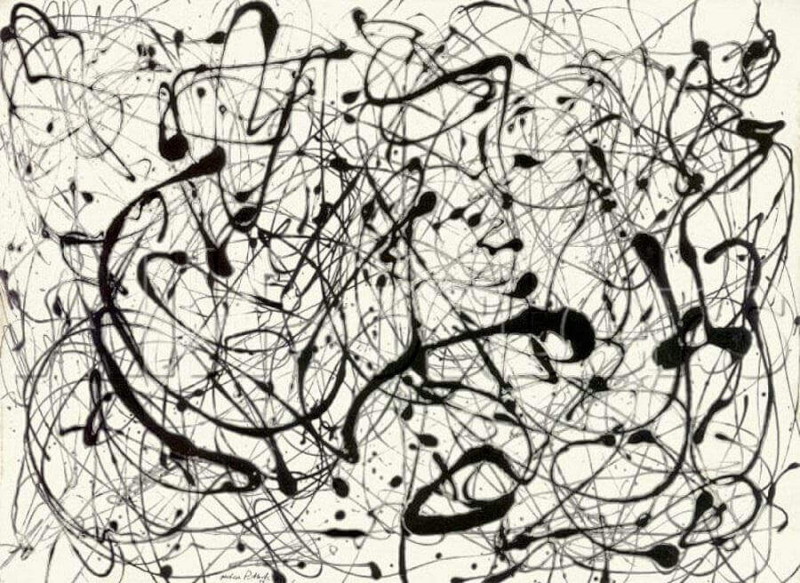 Jackson Pollock Lines of Paint with Drip Art
Jackson Pollock Lines of Paint with Drip Art
Line Weight and Its Role in Drawing
Line weight is a very important aspect of line drawing. It serves many purposes, including helping to tell the viewer about which parts are most significant. You might, for example, strengthen the lines around the strong parts of an object, such as a tree trunk, to signify strength, and then lighten the lines on supporting elements, such as the leaves and branches.
Another use of line weight is when drawing initially, before adding paint over the top. This can help to ensure the lines remain visible, even after paint has been applied and is a common issue to consider in watercolor painting. Schiele's painting included in this article shows this technique in practice, and helps to combine the qualities of both mediums together, producing a clarity of form alongside bright colors.
Using Lines to Convey Emotion and Mood
A careful use of lines in art can help to create a feeling of emotion and mood. Lines can accentuate facial expressions, for example, and also give a sense of movement, such as a smile or laughter. Additionally, they could signify a furrowed brow or other indicators of stress or sadness. Besides portraiture, nature can have movement and life in much the same way.
Jagged lines can also give a different atmosphere to straight lines, and the distance between parallel lines can also give very different effects. Imagine a map, for example, where closer lines signify a more intensive, steeper hill, where tranquility is interrupted. By combining line weight, frequency and angle, an experienced line artists can achieve all manner of different effects.
Drawing Portraits with Emphasis on Line Work
Portraiture is perhaps the best genre for line art. It is a great method to learning the basics of what can be a highly challenging genre. Some of the examples listed in this article indicate how to put together the initial lines to work towards convincing facial features. As you add more detail, it can get harder to keep something looking realistic, and considerable study is needed to master the human body. Once initial lines have been drawn to create the outline of the face, one can then use other techniques to create mood, lighting, and movement.
Drawing Tools and Materials for Line Art
Many different combinations can be used for line art, both in the tools used to apply the lines, as well as the mediums on which they are added. Textured paper can absorb most options, but some might prefer other options, such as with graffiti art, where paint is added to walls. Chalk, pencil, charcoal can be combined together or used by themselves for a mixture of results. Ink has also been used in some cultures, and benefits from delivering very strong lines, but is much harder to amend afterwards, where errors are made.
Digital art allows us to use tablets and other tools to work on the move. Many designers and illustrators will work from an office, and tweak their work on the computer, using digital software. Review processes can then be used as files are shared, helping out within commercial art. Many watercolor artists will sketch out in pencil first, before then applying opaque paint over the top, allowing the different tones to merge together as they dry.
Line Art as a Therapeutic and Meditative Practice
Relaxing with art is a charming hobby. Drawing can take your focus entirely, and helping you to ignore any other concerns. Children are particularly happy to work with simple artistic techniques, whilst adults can block out their anxieties by becoming engrossing in a process of sketching, painting or sculpting. Where you physically complete tasks, so the impact is greater, and any opportunity to include nature within this process will also have a positive effect on your mood. Meditative practices can include most creative tasks, such as writing, sketching, or playing a musical instrument.
An important idea is to avoid placing pressure on yourself, and just to enjoy the activity as is. Sketching with free forms, or throwing paint around can be better than aiming to achieve a particular level as soon as possible. The idea is to express yourself, without too much concern for evolution, development or an end result. That said, anything accomplished can help to build confidence and display results from your efforts, and so for some it might be worth building in a plan as you progress.
Line Art and Abstract Drawing: Exploring Boundaries
Abstract art involves changing recognisable forms into something more personal to the artist, and often this can involve the most minimal of interpretations. Lines will be carefully considered in that regard, with Picasso's animals drawings being great examples of that. Abstraction is a spectrum, moving from pure replication to the point where elements cannot be identified, other than by the artist himself. Abstract drawing is a great method of expression, working quickly and with just a few tools.
Conceptual art makes use of simple methods in many cases, and can cover philosophical concepts whilst also allowing the viewer to follow their own thought paths, and make their own conclusions rather than being overduly influenced. Line art has never been more popular than it is currently, with the use of minimal lines being well suited to modern tastes.
Line Art in Digital Illustration: Software and Techniques
Digital art has brought about new opportunities with regards line art. Artists can collaborate on the same projects, by saving and sharing digital files. This allows people from different geographical regions to work together efficiently, as well as sharing completed works on a global scale relatively cheaply. Artists can also work at their own leisure, slowly building up illustrations before returning at a later date. There is no need to consider drying watercolors or fresco art, and even multiple projects can be completed at the same time.
Digital software also allows artists to tweak their own work as they go. They might scan in work and tweak the colors, as with photographers, or they might produce the whole thing from scratch in a digital format and then correct errors as they go using various commands. Some might argue that this process does not hold as much integrity as traditional art methods, but this approach is becoming more and more common, as technology continues to shape the future of line art.
The Future of Line Art
As mentioned previously, digital technology is changing the way in which illustrations are formed, but also in how they are shared and promoted. AI will likely bring about automated art, which may prove a controversial topic in the future. Other artists may use AI as a supporting tool, helping them to amend their own hand drawings, whilst others might rely on it exclusively if they do not rate their own skills.
There may yet be a counter-response, similar to the 19th century Pre-Raphaelites, where some artists attempt to return to original methods. There is room today for all manner of different ideas, with society becoming far more open-minded as to what is acceptable, and what is not. This allows more artists to compete on an equal basis, both in terms of levels of society, but also across geographical and cultural borders.



